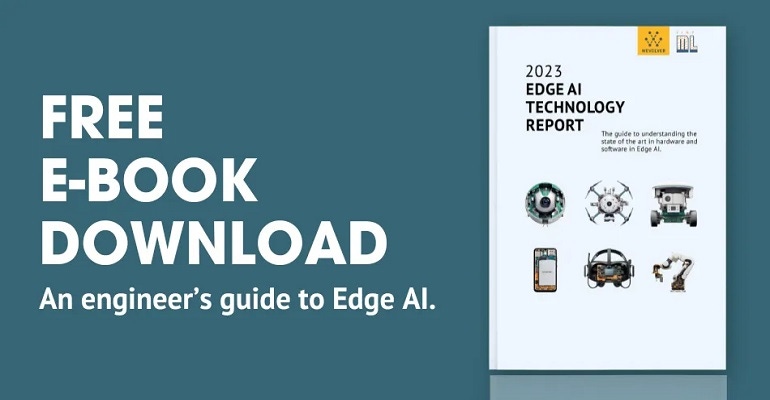AI Will Live at the Edge: Report
Faster decision making benefit of locating AI processing closer to data source.

Much of the growth in AI (artificial intelligence( the past few years has been in cloud-based AI. However, issues such as latency, bandwidth constraints, and security and privacy concerns are prompting an increase in placing AI processing at the network’s edge, according to a new report from Wevolver titled, “2023 Edge AI Technology Report.”
According to the report, edge AI allows for on-device data processing and enables real-time, context-aware decision making. Making this possible are the use of edge devices such as sensors, cameras, smartphones, and other compact devices. Edge AI processing offers advantages such as reduced latency, improved bandwidth efficiency, enhanced data privacy, and higher reliability where connectivity is intermittent.
The report noted that while Cloud AI predominantly performs data processing and analysis in remote servers, Edge AI focuses on enabling AI capabilities directly on the devices. Cloud AI is best suited for processing-intensive applications that can tolerate latency, while Edge AI excels in time-sensitive scenarios where real-time processing is essential. Deploying AI models directly on edge devices minimizes the reliance on cloud connectivity, enabling localized decision-making and response, according to the report.
The edge encompasses the entire spectrum from data centers to IoT endpoints, including the data center edge, network edge, embedded edge, and on-prem edge. The compute requirements essentially determine where a particular application falls on the spectrum, ranging from data-center edge solutions to small sensors embedded in devices like automobile tires.
According to the report, edge AI works best where rapid decision-making and immediate response to time-sensitive data are required. One example is autonomous driving, where Edge AI empowers vehicles to process sensor data onboard and make split-second decisions to ensure safe navigation.
Similarly, in healthcare, Edge AI enables real-time patient monitoring, detecting anomalies, and facilitating immediate interventions.
Factor to consider in Edge AI applications include power sensitivity, size limitations, weight constraints, and heat dissipation. Power sensitivity is considered crucial, as edge devices are often low-power devices used in smartphones, wearables, or Internet of Things (IoT) systems.
The report also noted that size limitations and weight constraints help distinguish Edge AI application areas. Edge devices are typically compact and portable, making it essential for AI models to be lightweight and space-efficient. This consideration is particularly relevant when integrating edge AI devices in applications where size and weight directly impact performance and usability.
A copy of the report can be downloaded here.
Spencer Chin is a Senior Editor for Design News covering the electronics beat. He has many years of experience covering developments in components, semiconductors, subsystems, power, and other facets of electronics from both a business/supply-chain and technology perspective. He can be reached at [email protected].
About the Author(s)
You May Also Like


.jpg?width=300&auto=webp&quality=80&disable=upscale)


